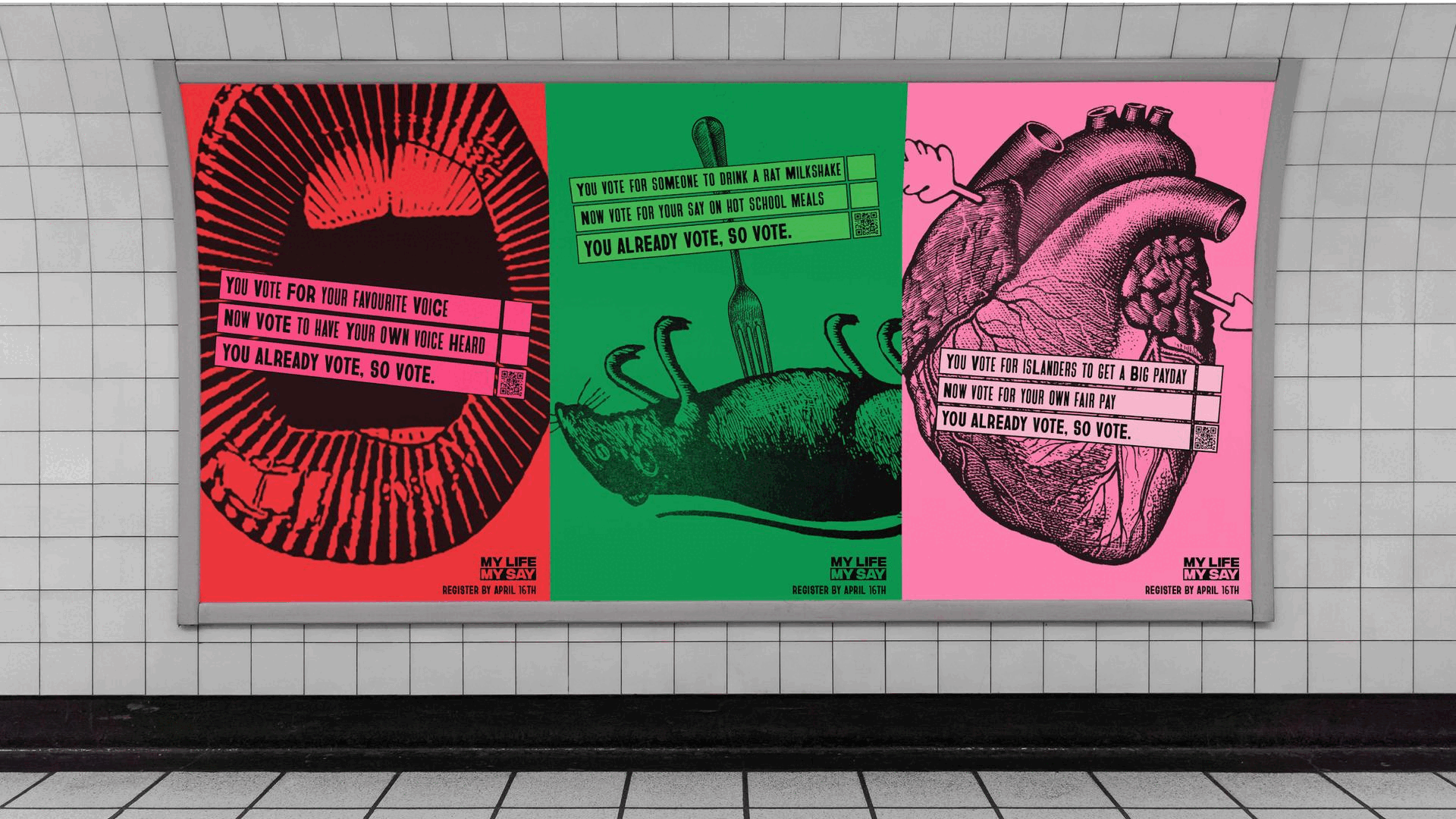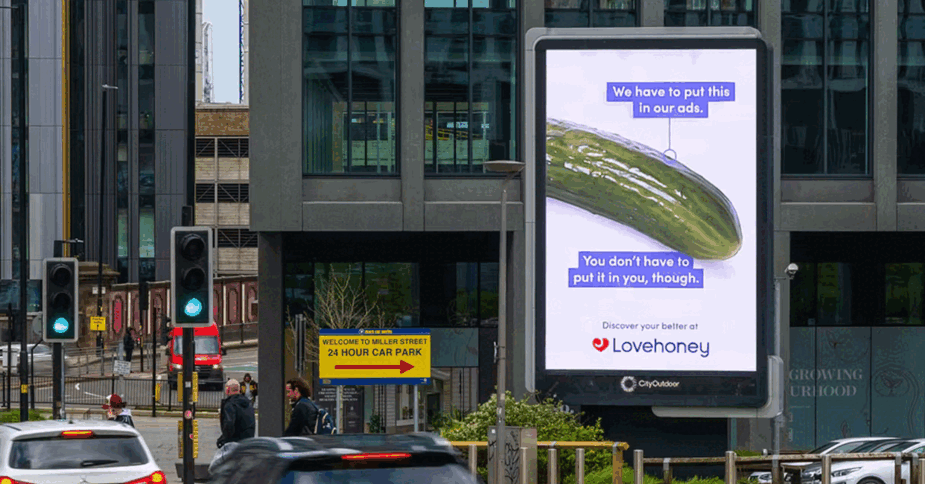Block Party
- Wednesday, February 17th, 2016
- Share this article:


When Interactive Advertising Bureau President and CEO Randall Rothenburg used his opening address at the IAB Summit in January to accuse ad blocking firm Adblock Plus of being an “unethical, immoral, mendacious coven of techie wannabes” and an “old-fashioned extortion racket” it was a sign, if one were needed, that the gloves were well and truly off in the ad-blocking wars.
Rothenburg’s comments were perhaps fuelled, to some extent, by the seemingly incessant tide of studies being released showing that consumers are deploying ad blockers in rapidly-increasing numbers. According to a January 2016 report from Global Web Index, for example, 37 per cent of mobile users are already using some form of ad-blocking software, with a further 42 per cent considering using them. The same study also revealed that 37 per cent of mobile users claimed to have blocked ads on their mobile within the last month.
Head in the sand
Despite figures like these, some in the mobile space have taken something of a head-in-the-sand approach to ad blocking. It’s less of a problem on mobile, so the argument goes, since ad-blocking is a web-only phenomenon and most of consumers’ time on mobile – 90 per cent according to the latest Flurry stats – is spent in app, along with most of the ad dollars.
In fact, however, those in the mobile advertising or publishing business should be very concerned about the rise of ad blocking. For one thing, more ads and advertisers are inevitably going to be hit by the problem as more and more desktop browsing moves to mobile. And, as Jason Cooper, general manager, mobile at Integral Ad Science points out, ad-blocking could soon be every bit as big a problem in-app as it currently is on the web. Cooper says he’s recently discovered some apps in the Apple App Store (www.weblockapp.com and www.adblockios.com) that can block ads in-app. They probably get round Apple’s security concerns, he believes, by taking an approach in which they don’t proxy or channel any data through a VPN (Virtual Private Network).
“I think the view is that now Apple is going to ditch iAd altogether, it’s probably a little more liberal on the ad blockers, so long as they dont contravene security policies,” says Cooper. “I think this is going to have massive implications for the likes of Google AdMob and MoPub. Ultimately, it will drive the market towards native, which is a more difficult format to block.”
Nathan Warner, co-founder of Mapp Media, agrees. He says: “It is going to become a problem if app owners don’t look at how they integrate ads in their platforms. We look at apps in two ways. First there’s the in-the-moment app like a game where people don’t care so much about the advertising. Then there are apps that are part of people’s everyday lives, around things like fitness and music, and here, the ads have to be very carefully integrated in the user experience. If not, it’s only a matter of time before ad blocking is enabled within apps, driven by consumer demand.”
Self-inflicted wound
There seems to be widespread consensus about how the ad industry got into this mess. Or perhaps that should read ‘got itself into this mess’.
“The rise of ad blocking is indicative of consumers signalling pretty loudly that the industry is not being innovative enough in terms of ad formats and delivering value back to the consumer base,” says Graham Moysey, head of international at AOL, adding, in a glass half-full sort of way, that the current situation offers “an excellent opportunity to ramp up on innovation and ensure the value exchange is closed.”
Ben Williams, head of operations at Adblock Plus, agrees that the ad industry has brought the current situation upon itself. “When the top brass of the IAB America says we messed up when introducing its LEAN (Light, Encrypted, Ad Choice-supported and Non-Invasive) initiative, it’s safe to say mistakes have been made in the past.” he says.
“Perhaps it started with the first banner ad and then the pop-up, and publishers started offering previously paid-for content for free and did not think about how to monetise that, so in an attempt to get it to work, they pumped websites with more and more ads, leading to slower page load times and a frustrating experience for the user. Which inevitably leads to the user deploying an ad blocker.”
The web is not the first place where people have been annoyed by ads, of course. If I didn’t have to put up with Capital Radio when running my kids to and from their various after-school activities, I wouldn’t go within a million megahertz of commercial radio, with its unbelievably irritating ads, especially the ones for financial products, where the lengthy list of terms and conditions have to be read at breakneck speed to squeeze them into the last five or 10 seconds of the ad.
The difference in the digital world, of course, is two-fold. Firstly, unlike, say, TV, publishers have been free to bombard users with as many ads as they see fit with no quotas setting upper limits. And secondly, the means by which a user can put an end to the misery – as some see it – of ads is only a couple of clicks away. In the process of researching this piece, I downloaded an ad blocker for my phone. The whole process of searching for the blocker in the App Store to using it to browse ad-free mobile sites took less than a minute.
The other thing I noticed was that the sites I visited didn’t seem overly concerned about the fact I’d chosen not to see their ads. None of them hit me with a request to turn off the ad blocker if I wanted to consume the content for free.
This situation, many feel, is unlikely to persist, however. Like Sir Martin Sorrell for one. As chairman of WPP, the world’s largest spender of ad dollars on its clients’ behalf, he has a vested interest in ensuring that those ads are seen. He says: “There are technological ways to deal with ad blocking, but consumers have to understand if they block ads that the ads do serve a purpose, and that is to reduce the cost of content for consumers.”
AOL’s Moysey agrees. He says: “My position is that things will shift because the economics of content will not allow for ad blocking. Or if ad blocking persists, the free content will shift to a subscription model.”
Customer service
The ad blocking companies, as has been noted from the start of this piece, have themselves come in for a good deal of criticism. They maintain, however, that they are merely providing a services that consumers increasingly want.
“Ad tech abuses consumers in various ways, from privacy to tracking to user experience,” says Roi Carthy, CMO at Israeli tech firm Shine, which caused a stir last year when it announced plans to help mobile operators enable ad blocking at the network level, meaning that any ad – on the mobile web or in-app – could be blocked, if the user was on cellular data, as opposed to wi-fi.
“Analyses performed at various carriers show that anywhere between 5 and 50 per cent of a data plan is used by ad tech,” Carthy continues. “These things cannot go on. As we look towards a more connected future, a new engagement paradigm has to be formed so it’s a huge threat or a huge opportunity depending on how you look at it.”
Since its initial announcement, Shine has been quiet on operator deployments, but in October last year, Jamiaican telco Digicel outed itself as Shine’s first customer, saying that it would deploy Shine’s solution across its mobile operator brands in the Caribbean and S. Pacific. The company also announced that it would be seeking revenue-sharing agreements with the likes of Google and Facebook.
In doing so, it touched on one of the most contentious issues surround ad blockers: the process of whitelisting. Adblock Plus, for example, runs a program called Acceptable Ads, which enables publishers to pay to bypass the ad blocking software. There are currently over 400 publishers on the program, and while the exact figure is unclear, estimates suggest that in 2014 alone, Google paid $25m (£17.2m) to have its search ads whitelisted.
So isn’t it a bit disingenuous of the ad blockers to offer a solution to consumers that blocks ads on the one hand, then take money for advertisers to bypass the solution on the other.
“It sounds like a ransom to me” says Integral Ad’s Cooper. “They are addressing a need but the question is always, how do you monetise that? I think they are struggling, so one obvious way is to charge to whitelist advertisers, but then the irony is that the original intention was to stop people clogging my page with their tags and now they say they will allow it if you pay the ransom; it doesn’t feel right to me.”
Sean Blanchfield, CEO of PageFair, which offers technology to defeat ad blockers (for more see panel – Blocking the Blockers) agrees. He says: “It’s inevitably hypocritical. If there are acceptable ads then why are they blocked in the first place? If they say Google search ads are not problematic to the users then why do they require Google to pay for them to be shown? It’s a tough moral position for them to try to defend.”
Adblock Plus’s Williams, however, is unrepentant. He says: “Everyone knows full well that Acceptable Ads is not about payment, but about a criteria. We set up the criteria for better ads with our users and we are handing control of it to an independent committee. These criteria have to be followed to be on the Acceptable Ads list and everyone knows that, but everyone seems to want to misrepresent it.” He concedes however that: “it’s also a monetisation method for a free product.”
Unbounded consequences
Irrespective of the rights and wrongs of whitelisting, the industry clearly has a problem on its hands with ad blocking. As PageFair’s Blanchfield puts it: “This has unbounded consequences. Left unchecked, there’s no reason why it could not wipe out internet advertising.”
So how to fix the problem? For some, like Jonathan Milne, chief revenue officer at ad creative tech firm Celtra, part of the solution lies in the ads themselves. He says: “To date, advertisers and their agencies have mostly seen digital advertising as a direct response medium with clicks, conversions and installs being the key metrics for success. As a result, the quality of the creative message has been a low priority because advertisers have been paying for results and not reach, nor valuing brand sentiment.
“However, consumers do not differentiate between ads that come from performance budgets and ads that come from brand budgets. Every ad they see impacts how they feel about that brand. Every ad is a branding ad, regardless of how the advertiser is paying for it.
“To resolve the reasons for ad blocking, both advertisers and publishers need to focus on delivering ads in formats that complement the user experience on multiple screens, as well as ensuring they carefully manage the volume and frequency of these ads for an appropriate consumer experience.”
Richard Reeves, managing director of the Association of Online Publishers, toes a similar line, saying: “In traditional print, there was a fair value exchange between publishers and consumers, with a focus on quality ad creative as a part of the agreement. The experience that is delivered with a physical full page, print advert should be able to be replicated online. Consumers positively engage with glossy adverts, so why should the online interaction be any different?”
But how realistic is it to think that all those people who have switched on ad blockers will switch them on again if the ads become more engaging and entertaining? How will they know, in fact, since they won’t be seeing them?
PageFair’s Blanchfield feels that this argument is missing the point. “When we asked 400 consumers in the United States what would cause them to start using ad-blocking software if they weren’t already, the relevance of the ad figured much lower in responses than privacy issues,” he says.
“In fact, just 10 per cent of respondents said they would start using an ad blocker ‘if marketers don’t improve their ability to target ads’ while 50 per cent said they would do so ‘if I feel my personal data is being misused to personalise the ads.’
“Everyone seems to be striving to deliver more personalised ads, but these assume something that people would not want in real life; the idea that a stranger knows all about them,” he continues. “Personalised ads and retargeting without permission is, by definition, creepy – this idea that some third party knows what web sites you’ve been on in the last week. Brand advertising was healthy for a long time before the advent of third-party cookies. Just because it’s possible, doesn’t mean you should do it.”
Hard line
The more likely solution, many believe, is likely to come in the form of publishers taking an increasingly hard line, as Forbes, has already done, telling consumers using ad blockers in no uncertain terms that if they want the content for free, they need to turn the ad blocker off.
“People block ads for different reasons. Over half say they don’t like the ad experience, for others it’s more about privacy,” says Steve Chester, director of data and industry programmes at the IAB in the UK. “If publishers can address each of those issues and get this message across that the ads pay for free access to the content, I think that will bring some of the ad blockers back. But there will be inevitably others who won’t want to see ads but also won’t pay for content so each publisher swill have to decide what they want to do.”
Data issue
But while the industry tries to work out how best to tackle the ad blocking problem, there’s another, equally troubling one, on the horizon, concerning the consumer data that fuels much of today’s online advertising business.
The European Commission is currently working on new data privacy rules called the General Data Protection Regulation (GDPR) – though before US ad tech firms breathe a sigh of relief, they should note that the regulations apply to any company doing business with a European citizen, and that there are rumours of California enforcing similar regulations.
The EU Council is aiming for formal adoption of the regulation this year, and it will take effect after a two-year transition period. While it will not require any enabling legislation to be passed by governments, as a Directive would, Forrester principal analyst, Fatemeh Khatibloo, says the regulation could have huge implications for digital advertising.
She says: “The GDPR says a lot about data protection, collection and permissions, but if you look at the way the ad ecosystem works today, that data gets passed around and no one has considered PII (Personally Identifiable Information). They don’t see the need to apply the same rules as if it was the user’s name and address they were collecting. But the GDPR says they don’t have the right to collect this data and pass on to umpteen other ad tech providers without their permission. If you look at the way the regulation is written, it’s going to bring the whole ad blocking craze to a head. Ad tech companies are not in compliance with the regulation. We’ll see a lot of them go under.”
Just how big a problem GDPR becomes for the ad tech industry depends, says Khatibloo, on the level of enforcement. “It’s really hard to figure out where this data is going because it’s not like your name and address and picking up the phone and asking where they got it,” she says. “It’s going to be really hard to identify what these downstream ad tech companies are doing and who they are getting their data from, so the question becomes, whether the EU is serious about putting some technologists on this discovery if they want to enforce it, or whether they will rely on consumer complaints. If the former, it’s a perfect storm, but if it’s the latter, it’s hard to imagine very many ad tech companies are going to be discovered via consumer complaints.”
The $64m question then: which way does she believe the EU will fall? Her answer should suffice to strike fear into the hearts of any ad tech exec who thinks the current ad blocking fuss will all blow over.
“If they decide to follow the Federal Trade Commission’s example, they will hire technologists,” she says. “The FTC has brought on a chief technologist and ‘white hat’ researchers and they have been breaking open a lot of the under the hood advertising stuff and bringing actions. So if the European Commission wants this to work, it will hire techies, and I really hope they do because that will send out a real signal that they are serious about it.”
Boxout – Blocking the blockers
Where some see problems, others will always see opportunities. So as more and more people deploy ad blockers, so solutions have emerged to enable advertisers to get their ads seen and publishers to maintain their ad revenues.
At a basic level, there’s the Adblock Plus approach, which says that you can get round its ad blocker if you pay to be part of its Acceptable Ads program, and meet the criteria, which, going forward, will be set by an independent committee.
Earlier this year, startup Oriel launched what it describes as its “content protection” solution, which it says renders desktop, mobile and even ISP ad-blocking ineffective. Oriel’s tech provides publishers with tools to analyse who is ad blocking on their site, and to communicate with the ad blockers and control access to content.
On detecting an ad blocker, the publisher can choose to simply ask them to turn the ad blocker off. This, says Oriel co-founder and CEO, Aiden Joyce, results in around 3 per cent of ad blockers doing so.
Stage two, if the publisher chooses to deploy it, is to message the ad blocker saying they must turn the blocker off in order to access the content. This will succeed in persuading 40 per cent of the ad blockers to turn the blocker off. In stage three, the publisher can use the tech to simply override the ad blocker and serve the ads anyway, if they choose to do so.
PageFair’s approach is to enable publishers to serve up simpler, lighter ads – no rich media or video content – which load more quickly, when an ad blocker user is detected. This might sound counter-intuitive to some. As Jay Fowdar, CT) at Demand-side Platform (DSP) Byyd puts it: “The anti-ad blocking companies I feel are really waving a red rag to the ad blockers. I’ve heard of companies trying to re-inject ads after they’ve been blocked. How is that good for a consumer experience? If the consumer has installed an ad blocker, they’ve explicitly said I don’t want to see ads. So any brand exposed to that user will likely be unwanted, and therefore have a negative impact for the brand.”
In fact, says PageFair CEO Sean Blanchfield, most ad block users don’t get confused or annoyed because this is not the sort of ad they want to block, and he says he has the stats to prove it.
“When we replace a rich media ad with our more basic ad unit, the clickthrough rates are the same,” he says. “Where it’s a like-for-like ad, we see clickthrough rates between 50 and 100 per cent higher.”
















